Hegarty, D., Buchanan, B. ( 2021, November 29). Psychologist Norms for the Professional Quality of Life Scale (ProQOL). NovoPsych
The Professional Quality of Life Scale (ProQOL) is a 30 item self-report questionnaire designed to measure compassion fatigue, work satisfaction and burnout in helping professionals. Helping professionals are defined broadly, from those in health care settings, such as psychologists, nurses and doctors, to social service workers, teachers, police officers, firefighters or other first responders. It is useful for workers who perform emotional labour as well as professionals who are exposed to traumatic situations. While the scale is useful for many professionals, this paper outlines how NovoPsych created norms specific to Australian Psychologists, so that they can compare their experiences at work to peers.
Professional Quality of Life is the quality one feels in relation to one’s work as a helper. Both the positive and negative aspects of doing one’s job influence one’s professional quality of life. The ProQOL measures three aspects of professional quality of life:
- Compassion Satisfaction (pleasure you derive from being able to do your work well)
- Burnout (exhaustion, frustration, anger and depression related to work)
- Secondary Traumatic Stress (feeling fear in relation to work‐related primary or secondary trauma)
The scale is particularly useful for professionals to self-monitor their satisfaction and as a prompt for self-care. With burnout and compassion fatigue being workplace hazards for psychologists it is worth considering how these professionals can monitor workplace well-being and respond to the inevitable challenges.
Method
To determine the level of compassion satisfaction and compassion fatigue (burnout and secondary trauma) for psychologists, NovoPsych emailed its users in November 2020 and asked them to complete the ProQOL for self evaluation and research purposes. As a result, 245 psychologists completed the assessment and contributed to our normative data.
Data Cleaning
To validate the integrity of the data, various anomalies were identified. Firstly, overall scores were assessed to see if there were any results that were significantly different (i.e. > 3 S.D. outside the mean) to other scores. There was only one result that was significantly higher (4.8 S.D. above the mean) than other scores, but upon closer inspection, this response indicated a high score in the secondary trauma scale, whereas the other scales were similar to all other scores. Therefore, this data was assumed to be valid and was not removed. When looking at the time taken to complete the assessment, there were some outliers (n = 3) where respondents took significantly longer (> 3 S.D.) than the mean (236 seconds) to complete the assessment. However, upon closer examination, these responses did appear to be legitimate given there was variety in the response pattern and the scores themselves were not outliers. Therefore, it was assumed that this could have been a busy psychologist who started to self-administer the assessment, got distracted, and came back to finish the assessment at a later stage. As a result, the responses were considered to be valid and were not removed.
Therefore, there were no responses removed as a result of this data tidying process and the final sample size for the NovoPsych ProQOL psychologist data was 245. This final data presented as an approximate normal distribution for the total scores (see Figure 1), although the time taken to complete data was very right-skewed (see Figure 2).
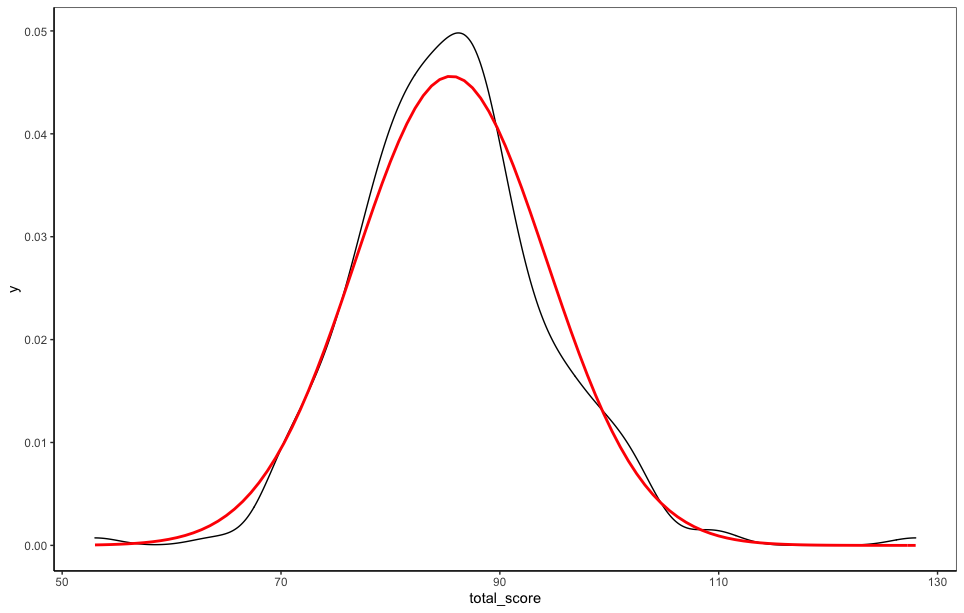
Figure 1. Distribution of total raw scores for NovoPsych ProQOL psychologist data. A theoretical normal distribution is shown in red.
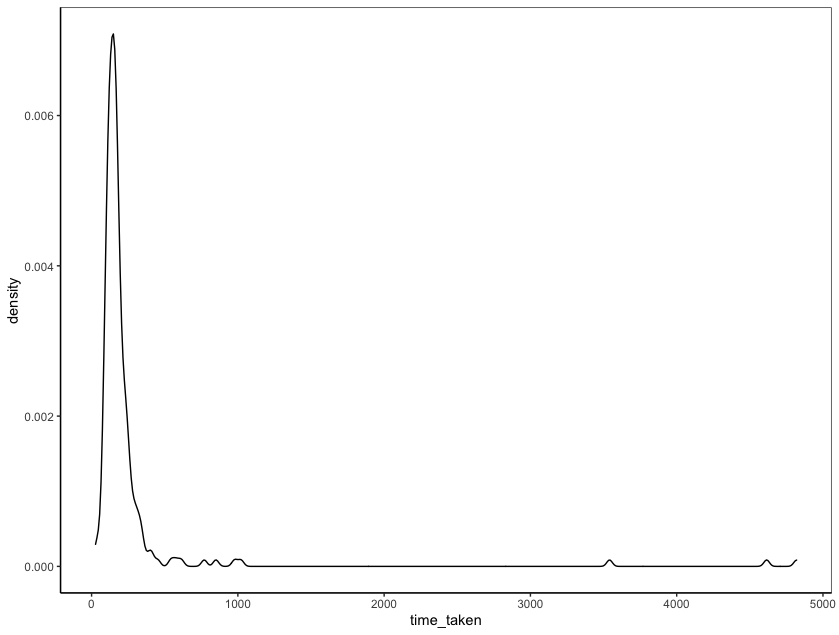
Figure 2. Distribution of time taken to complete the ProQOL.
Results
The distribution of the raw scores for each of the subscales for the NovoPsych psychologist data for the ProQOL were approximately normally distributed (see Figure 3). However, it can be seen that the Compassion Satisfaction subscale appeared to have a higher score than both the Burnout and Secondary Trauma scales.
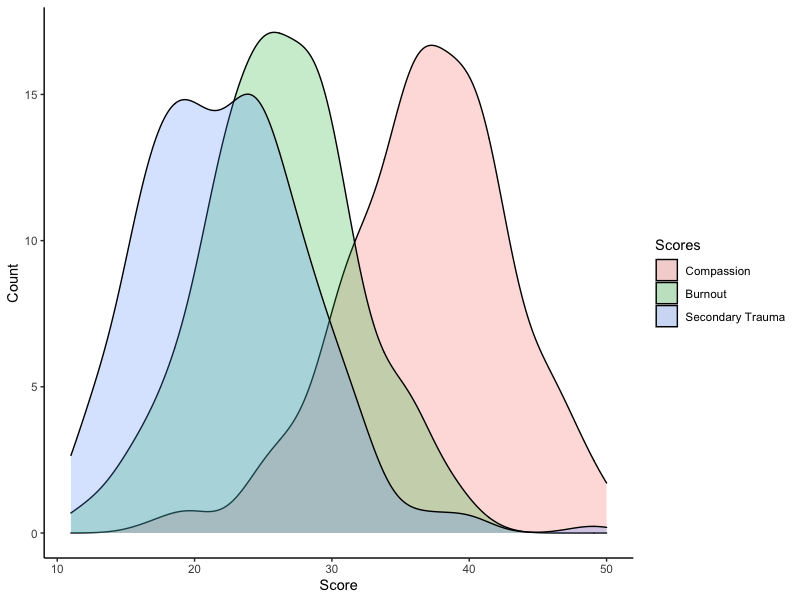
Figure 3. Distribution of raw scores for each subscale of the NovoPsych ProQOL psychologist data.
When the distribution of the percentiles are shown (see Figure 4), it can be seen that the distribution for both the Burnout and Secondary Trauma subscales are skewed left. According to the standard ProQOL norms (Stamm, 2010) for “helping professionals” in general, the psychologists who completed the ProQOL in this sample were quite ‘burnt out’ and were suffering from an extreme amount of secondary trauma, with only 2 respondents being below the 50th percentile. Significantly, over 22% (n = 56) of respondents scored above the 95th percentile and over 52% (n = 129) of respondents scored above the 90th percentile for the Secondary Trauma subscale. The Compassion Satisfaction percentiles were more evenly distributed.
Using the standard ProQOL norms, the percentiles for the Burnout and Secondary Trauma subscales are slightly unusual, indicating that they are not representative of the typical experience of psychologists. The raw scores for both these scales are quite well distributed and there doesn’t appear to be any significant floor or ceiling effects, although there are a few low scores on the Secondary Trauma subscale. However, when these scores are converted into percentiles using the standard ProQOL norms, especially for the Secondary Trauma subscale, they are very skewed. There could be two possible explanations for these results.
Firstly, all the psychologists who responded to the ProQOL during this time period are bordering on burnout and are suffering from quite significant secondary trauma. We therefore looked at de-identified self-assessment data collected from January 2021 to November 2021 to see any impact of time (given lockdowns and COVID), and did not find a significant difference. We therefore concluded that the sample in November 2020 was a representative sample.
Secondly, it could be that the standard norms used for the ProQOL are inappropriate for use by psychologists. That is, the standard norms published on the ProQOL manual convert into percentiles that are too high.
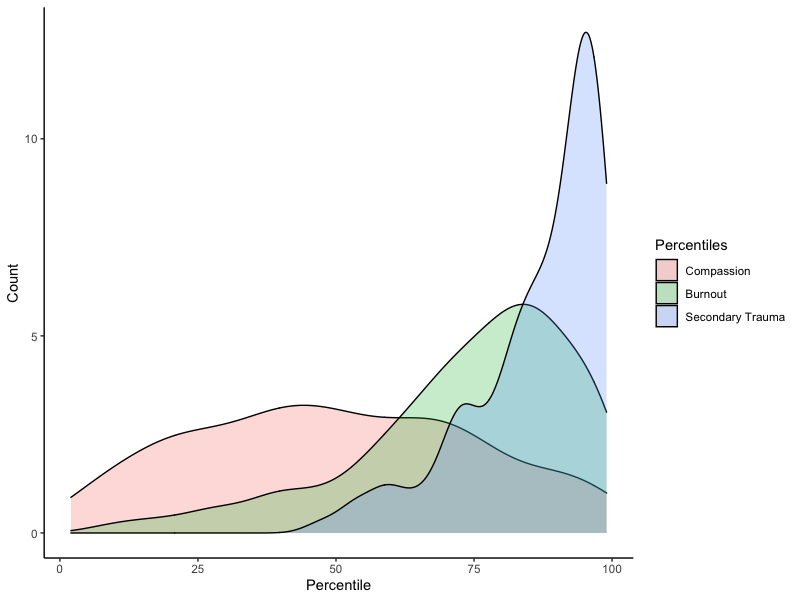
Figure 4. The distribution of percentiles for the NovoPsych ProQOL psychologist data.
Given these unusual findings, it is questionable as to whether the existing standard norms of the ProQOL are suitable for use amongst psychologists to monitor their wellbeing. Therefore, it was decided to use our own norms for the purposes of giving psychologists a better understanding of their own levels of compassion satisfaction and compassion fatigue. As a result of this process, we can now present the means and standard deviations for each subscale of the NovoPsych ProQOL psychologist data (see Table 1).

We also developed a percentile table for all subscales (see Table 2). This was developed by the Nearest-Rank method.
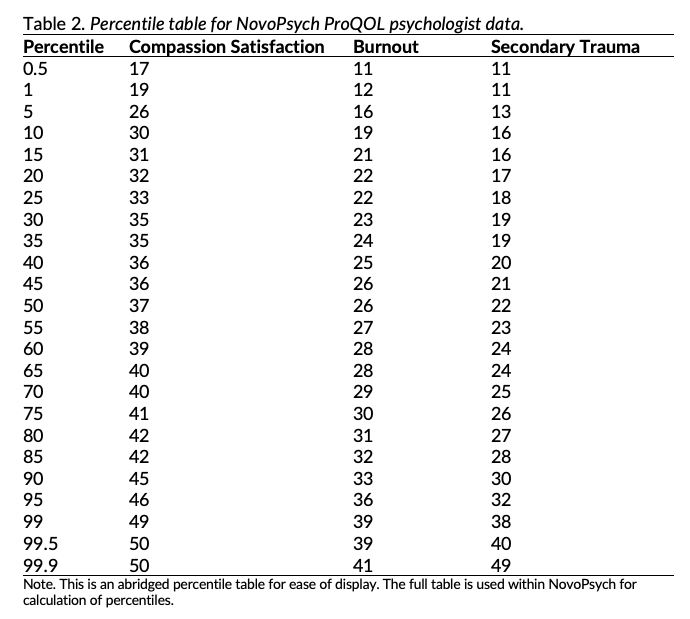
Discussion
The standard ProQOL norms (Stamm, 2010) appear to be unsuitable for use by psychologists in monitoring their own wellbeing in the form of compassion satisfaction and compassion fatigue. This is due to calculated percentiles providing an apparent inflated sense of potential problems, particularly on the Burnout and Secondary Trauma subscales. As a result, the new norms developed by NovoPsych allow psychologists to monitor their compassion fatigue in a more reliable, accurate, and useful manner. All this analysis and data is synthesized and presented when a NovoPsych user self-administers the ProQOL or administers it to a client.
References
Stamm, B.H. (2010). The Concise ProQOL Manual, 2nd Ed. Pocatello, ID: ProQOL.org. Retrieved November 13, 2021, from https://www.researchgate.net/profile/Beth-Stamm/publication/340033923_The_Concise_ProQOL_Manual_The_concise_manual_for_the_Professional_Quality_of_Life_Scale_2_nd_Edition/links/5e73a313299bf134dafd884f/The-Concise-ProQOL-Manual-The-concise-manual-for-the-Professional-Quality-of-Life-Scale-2-nd-Edition.pdf

